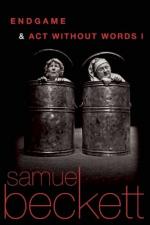|
This section contains 1,402 words (approx. 5 pages at 300 words per page) |

|
In a play "you have definite space and people in this space. That's relaxing" Ruby Cohn, Back to Beckett, 1973. But the actual locations Beckett chooses for his characters and for the actors who play them, is anything but relaxing. In the first plays there is at least something an actor can relate to spatially—a country road and a tree; an empty room with two windows, two ashbins and a wheelchair; a mound in the middle of a "trompe l'oeil" desert. In later plays the actors find urns, a narrow-lit strip to pace on, a hole in the backdrop to stick a head as a mouth through. In some plays pieces of furniture are deliberately detached from the room to which they might have belonged—a bench, a table, a rocking chair. The rest of the stage space is referred to in words, lights, gestures and movement, etc...
|
This section contains 1,402 words (approx. 5 pages at 300 words per page) |

|


